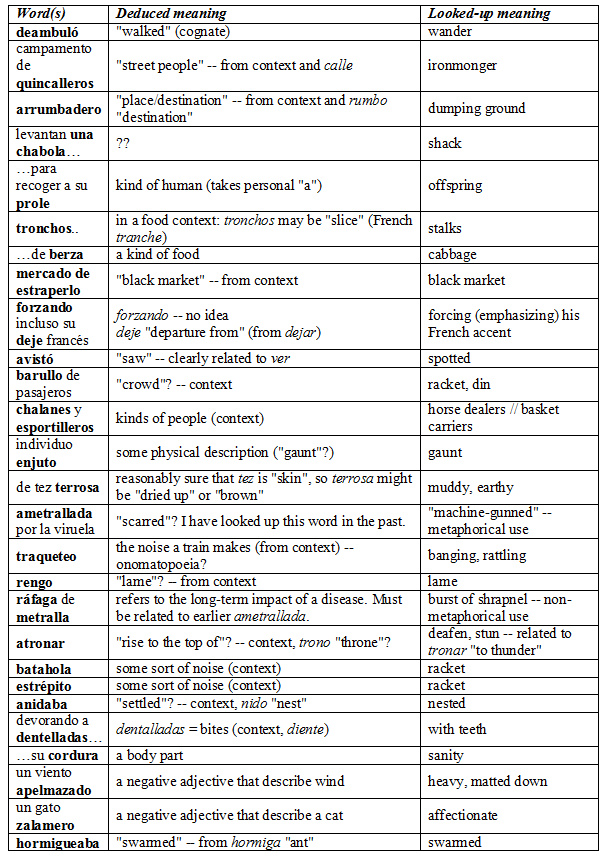After a hiatus of several weeks, I recently took advantage of a cross-Atlantic flight to finally finish Juan Manuel de Prada’s novel El séptimo velo. It has been a tough but exciting slog. I’d recommend the book to an ambitious non-native speaker, or to a native speaker interested in a variety of topics: World War II (especially the German occupation of Paris), mental illness, circuses, or love.
In an earlier post I dissected a single metaphor used in El séptimo velo. More recently I went into a potentially embarrassing level of detail about the book’s challenging vocabulary. It was heartening to hear back from native speakers that some of the words that stumped me were unfamiliar to them as well, or at least struck them as antiguo, culto, rural/rústico, or literario. Several other words that I didn’t know are, in fact, reasonably common, and definitely belong on my “need to know” list. One never stops learning.
Given my linguistic fascination with El séptimo velo, I was intrigued to read a blistering online review of it by Sergio Parra (in Papel en blanco) that took particular issue with the novel’s language. While Parra acknowledges that some of de Prada’s prose “shows stylistic mastery”, he describes the book as, variously:
- mucha letra y poca historia (“many words but little to say”)
- 650 páginas que habrían podido resumirse en 200 (“650 pages that should be 200”)
- que incurre en …el exceso de metáforas, en el exceso de frases preciosistas trufadas de subordinadas…(“over-indulging in metaphors and gaudy sentences crammed with subordinate clauses”)
- pesada, lenta, morosa, meándrica, superflua, barroca (“heavy, slow, morose, meandering, superfluous, and baroque”)
Personally, I enjoyed de Prada’s almost joyfully complicated prose. A prime example is a 3 1/2-page-long tour-de-force paragraph toward the end of the novel (pp. 583-6 of the Planeta edition). In alternating sentences, it simultaneously narrates both (i) a passionate bout of lovemaking between two main characters, and (ii) a weeks-long chain of events involving the French Resistance, triggered by one of the lovers’ revealing a secret to the other at the beginning of the scene. For me, it worked.
De Prada uses one of the novel’s secondary characters to gently mock his own writing style. His description of the psychologist/hypnotist Portabella is worth quoting at length (p. 518):
Portabella was a virtuoso of conversation, or, more specifically, of monologue. He talked as if speech were as necessary to him as breathing or eating; he spoke, moreover, with extreme precision, using an extensive vocabulary and constructing sentences with satisfaction and accuracy, as befits someone who for professional purposes is familiar with the spell-binding power of language [a reference to hypnotism or to writing]. He never used a common word if an erudite alternative was available; he never used a vague word if he could find a more exact one. It wasn’t a torrent that flowed from his lips, since there was nothing hurried or confused about his speech, but rather a wide river flowing down a valley. It flowed with a tranquil, yet constant force that carried away all everything that opposed its progress.
It’s even better in Spanish! Check it out if you can.
